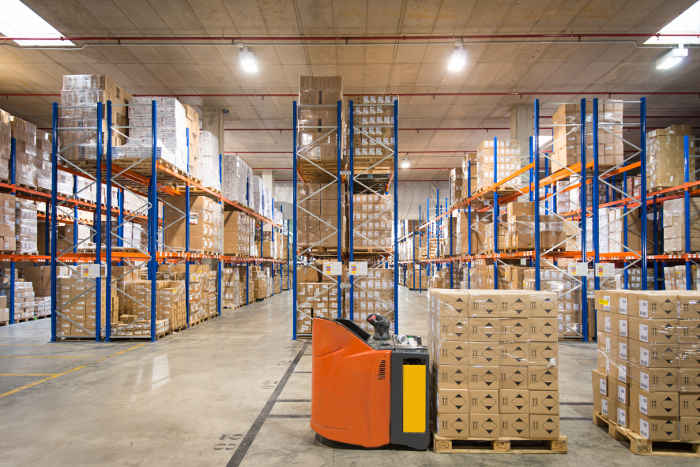Bearing in mind that this working equipment is a fundamental piece in any logistics operation, it is a very appropriate question that should be formulated in relation with our warehouses. Misuse or negligence can pose high health risks on workers, and general economic risks on the company.
Many users of industrial racking would be surprised if they were told that they are making improper use of their industrial storage systems, an everyday use equipment in warehouses and logistic centers.
Industrial racking installations are, after all, static load-bearing structures that support high loads in height, and which can store a large number of tons. Its structural integrity is therefore a fundamental factor on which to pay attention.
Estructural integrity of industrial steel racking
During day-to-day operation with material handling equipment like forklifts and other equipment allowing the handling of heavy loads, impacts may occur on main racking elements during loading and unloading operations, as well as during the commute of these handling equipment along main and secondary aisles. Impacts of the high mass handling equipment, produce damages on the uprights or pillars of the racking structure and can produce overall bends of these elements. The technical norms establish for these uprights and in a length of 1 meter, that an overall bend greater than 3 mm in its front face and in the plane of the frame bracing, or 5 mm in its front face in the longitudinal direction, represent a sufficiently relevant damage to compromise the correct operation of the racking, and it requires the unloading and blocking of the affected bays until the damage is repaired by means of the replacement of the deteriorated elements.
The affected area will see its loading capacity reduced below the loading capacity of design indicated in the loading plates, putting warehouse workers and stored goods at risk.
Therefore, taking into account the speed and high weight of the forklifts, the high frequency with which these equipment impact on the racking, and the reduced margins of deformation that allow the technical norms, makes it is necessary to carry out technical inspections to highlight these damages and reduce the risk levels of the installation.
It is also important the design and arrangement of the different runs of the racking in the warehouse. In this context, the dimensions of working and circulation aisles have to take into account the technical standards and have to be adapted to the manufacturer’s specifications of the forklifts or the handling equipment in general. Not all manufacturers and lift truck models require the same aisle widths to allow them to turn. Therefore, the specifications of the trucks used must be considered in the design of the racking and aisle widths.

In relation to this aspect of the safety of storage equipment it is necessary to draw attention to the fact that the handling equipment (forklift trucks) can vary during the life of the warehouse. It should be paid special attention during fleet renovations or when renting additional trucks during peak periods of workload. It is precisely in these situations in which trucks with different specifications can be incorporated in the warehouse and may not be suitable for the installed racking equipment.
Other important aspect to pay attention to are the loading plates. On one hand, they indicate the existence of a design project of the installation and on the other hand they condense in a visible place of the warehouse all the relevant information for the proper use of the racking. Loading plates must be located in a visible spot of the warehouse, so that warehouse workers and managers can check anytime if the load units are correct for the design of the racking, the weight stored does not exceed the maximum allowed, or if the distribution in height of the load levels is correct. The absence of loading plates implies a non-conformity according to the technical standards in force, and is an aspect that must be resolved urgently by going to the supplier or an expert who can provide these loading plates.
Other relevant aspects to consider in order to evaluate a correct use of the racking are among others, the existence and arrangement of upright protections, the use of suitable loading carrying accessories such as standardized pallets, the adequate training of staff, warehouse workers and truck operators on the correct use of industrial racking and the risks inherent.
At Noega Systems we are specialized in the design, manufacture, assembly and inspection of all types of metal shelving, industrial and storage systems. If your company needs advice in this area, do not hesitate to contact us.



